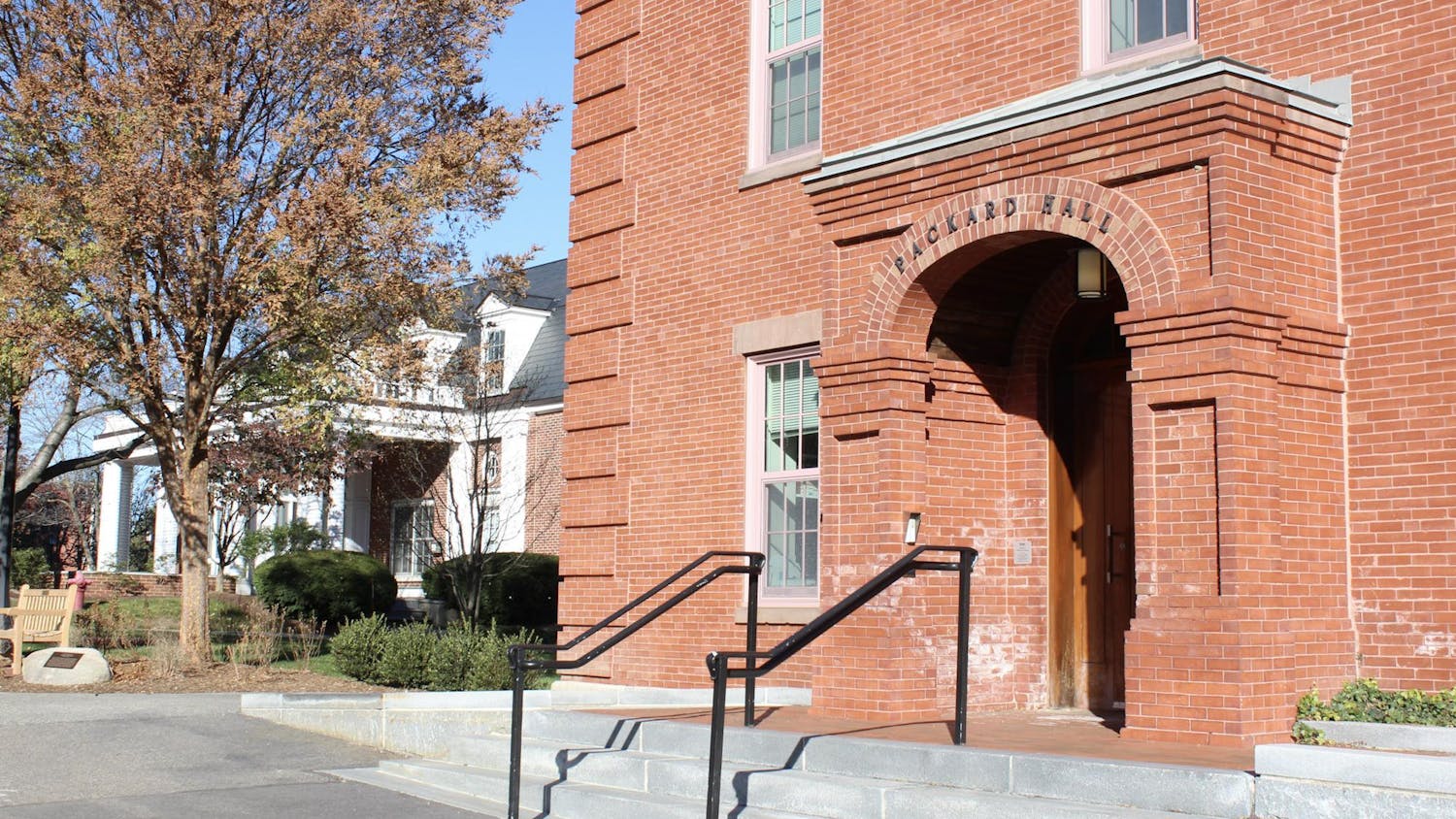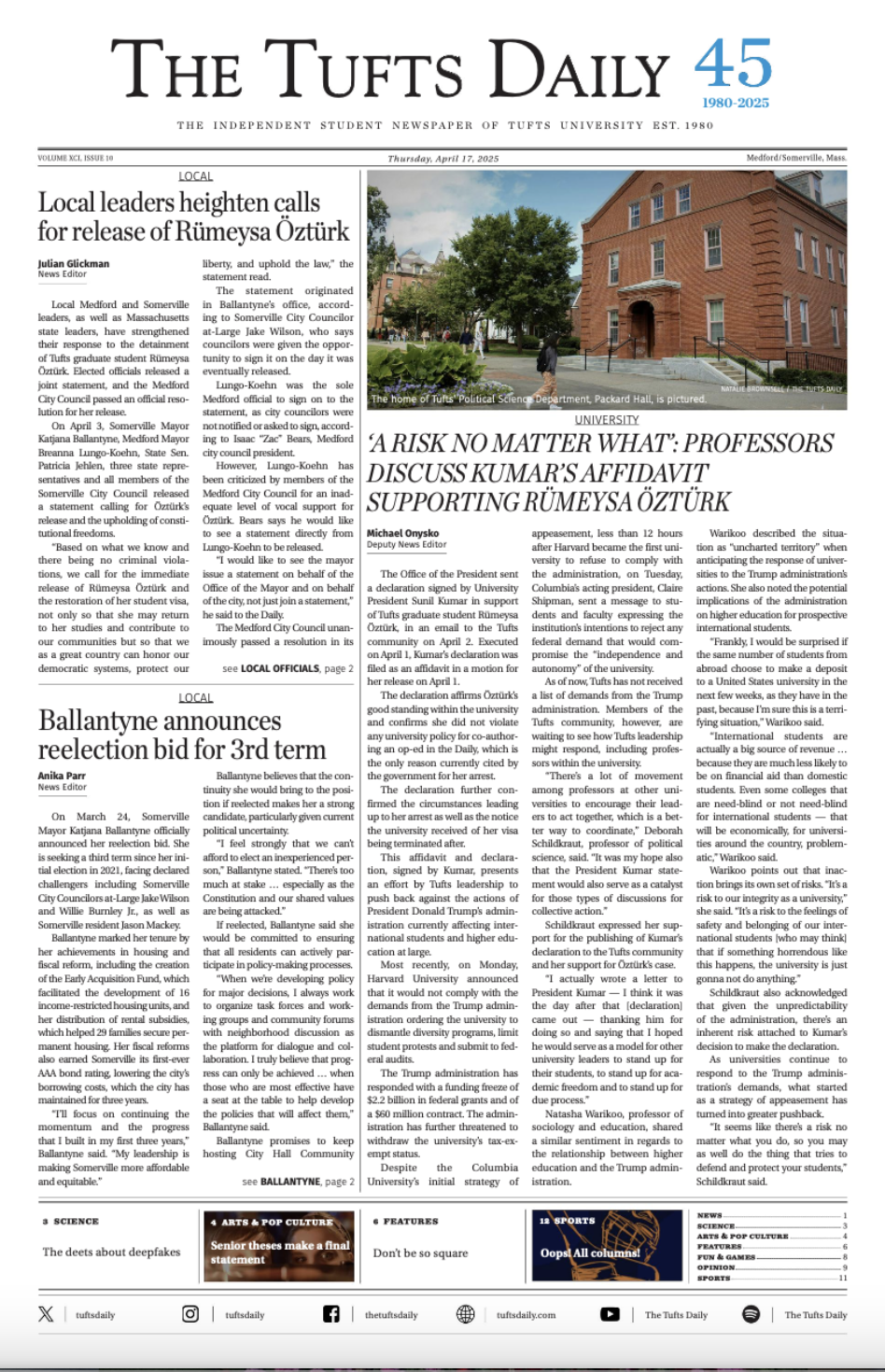University President Anthony Monaco announced in February that Tufts would prohibit direct investments in 120 coal and tar sands companies. In addition, the university committed to investing between $10 to 25 million in positive impact funds, which seek to make a positive environmental impact in addition to generating a return on investment over the next five years. These efforts to advance sustainability come after demands from student groups, faculty and a Responsible Investment Advisory Group (RIAG) to divest from fossil fuels. This semester, the Tufts Investment Office has continued to pursue these goals, publishing a website and dashboard with updates on their progress and explanations of how the endowment functions.
Tufts’ endowment and investments
The endowment is a pool of money maintained over time to provide long-term financial stability for the university. Each year, a sum of money called the payout is taken from the endowment to fund the university’s operation. The remainder is invested to generate more money for the university. In recent years, the payout has represented around 5% of the endowment and has provided about 10% of the university's revenue, although these amounts vary by year depending on the value of the endowment.
Chief Investment Officer Craig Smith emphasized the importance of the stability and flexibility that the endowment provides.
“Last year, [with] the pandemic, the university was able to increase the payout, which helped tremendously on the financial side of support and all the additional costs and all the complications we ran into,” Smith told the Daily in an interview.
The pool of money that the university invests is divided into three different forms of ownership.About 1% of this money is invested as a direct holding, meaning that the university has direct influence over that money and uses it to buy stocks in whatever company it chooses.
Separately managed accounts, or SMAs, are a form of indirect investment that represent another 10% of the money Tufts invests. Each SMA is controlled by a third-party manager, who is a specialist hired by the university to make decisions about where and how much to invest on the university's behalf.Tufts can work with the third-party managers to outline its investment goals and values and customize its investments within the SMAs.
The remaining 89% of Tufts’ investments are in commingled funds. Like SMAs, commingled funds are a form of indirect investment, but, unlike SMAs, in commingled funds the university’s money is pooled with other investments for a more efficient, cost-effective investment strategy. Of these commingled funds, 56% are marketable, meaning they are invested in stocks and bonds that are publicly traded. An additional 28% are invested in private equity and venture capital, with 11% invested in private diversifiers and 5% held as liquidity.
“This is, … for institutions of our size, how the vast majority of money is invested,” Smith said of commingled funds. “Customization is very hard to achieve in that space.”
Since 99% of the university’s invested funds are in indirect investments — where the university has less control over the technicalities of the investments — divestment from the fossil fuel industry can be challenging, Smith said.
Current indirect investments in energy
The RIAG’srecommendation that Tufts divest from and prohibit future investments in the 100 largest coal reserve and 20 largest tar sands reserve companies — which was approved by the board of trustees in February — specifically concerned Tufts’ direct investments. While Tufts now has zero direct investments in coal and tar sands companies, it continues to hold indirect investments in these sectors. In fiscal year 2021, 0.7% of Tufts’ assets were exposed to the 120 coal and tar sands companies that the RIAG identified as the main contributors to fossil fuels via indirect investments in commingled funds, according to the Tufts Investment Office’s website.
In addition to coal and tar sands companies, Tufts invests both directly and indirectly in companies within the broad energy sector, including oil and gas companies. According to the investment office’sreport on its portfolio’s exposure to broad energy sector companies, 2.9% of Tufts’ total assets — including both indirect and direct investments — were exposed to this sector in fiscal year 2021. 0.3% of Tufts’ total assets were directly invested in this sector.
Smith expressed that, in the context of Tufts’ entire portfolio, the scale of the university's investments in the broad energy sector is “exceedingly small.”He further noted that companies classified as being in the broad energy sector are not solely main contributors to climate change like exploration and extraction companies but could also include companies that provide supplemental services to energy companies, such as midstream distribution of oil.
The future of Tufts’ indirect investment
In addition to prohibiting direct investments in coal and tar sands companies, Tufts said in February 2021 that it would attempt to influence its indirect investments, including commingled funds, by communicating with investment managers. Smith outlined steps that the investment office will take to ensure that the university’s values are considered in future investment decisions.
“As we move forward and we make new manager hires in the portfolio, we have embedded … diligence on [environmental, social and governance investment criteria],” Smith said. “We would certainly never hire a manager who has an active focus [in fossil fuels].”
Smith said that it is difficult to predict if Tufts will ever completely divest from fossil fuels but that there is potential for change in the future.
“My perspective is, over time, there will be greater ability to be able to make those sorts of changes,” Smith said. “Honestly, the most important thing is that we took the first step. … The fact that we’ll have another window in a few years’ time to revisit this and talk about it again is a really positive thing.”
Smith said that divestment has a strong symbolic role in pushing the market away from fossil fuels.
“Divestment is important," Smith said. "I think it’s the symbolism of it more than anything else that’s really important; it is a message to send to the market, and collectively, when everyone sends us messages, it can create change.”
Professor Paul Joseph, who was a member of the RIAG, echoed Smith’s sentiment that colleges and universities have an important symbolic role to play in divesting from the fossil fuel industry.
“I think if a critical mass of colleges and universities divested, then it’s a critical signal for investment markets and for the country as a whole,” Joseph said.
However, divestment does not actually reduce the demand for fossil fuels, Smith said.
“The limitation of divestment is … it doesn’t alter what actually creates the continuation of fossil fuels, and that is the demand for fossil fuels, the consumption of fossil fuels,” he said. “We need … massive investment in green energy production … to get in place the capacity to replace fossil fuels, and that is what will ultimately cause a change.”
Therefore, the university has also pledged $18 million to positive impact funds since the RIAG recommendations were made. An initial commitment of $10 million was made to a private infrastructure fund focused on wind and solar energy projects. The other $8 million were committed to a venture capital fund which invests in technologies focused on carbon neutrality.
Students’ fight for full divestment
Members of the Tufts community, including student activists, have continued tocall for full divestment from fossil fuels. Tufts Climate Action (TCA) is one such student organization that works with the Tufts community to fight for full divestment. Grace Abe, a member of TCA leadership, said that TCA wants Tufts to commit to divesting their indirect funds.
“[We are] really trying to take as many avenues as possible to put pressure on Tufts from within and outside of the Tufts community to try to get them to divest,” Abe, a junior, said.
Abe said that TCA hopes to pressure Tufts to speed up their timeline for reconsidering divestment by spreading awareness and gaining support from the student body. TCA is currently working on building a faculty and student coalition, which would create a broad climate plan for Tufts.
While deliberating on the actions that Tufts could take in regard to its endowment, Smith said that the RIAG and the investment office fully agreed on the severity of climate change.
“[The effects of climate change were] really not in the debate during the time,” Smith said. “The debate was around what are the best actions to take.”
When putting together their recommendations for the board of trustees, the group considered what policy changes would be most effective for creating real change.Smith said that weighing the efficacy of pure divestment versus instant positive impact investment was a key part of this deliberation.
Reflecting on the RIAG’s recommendations and the investment office’s performance since, Smith expressed pride in the group and its accomplishments.
“I recognize that there is certainly a range of views in terms of how people like the outcome of the decisions and recommendations [of the RIAG],” Smith said.“But I would say that the process was … really quite effective in terms of achieving what it was intended to achieve.”
Fossil fuel divestment at other universities
In September, Harvard Universityannounced that it would fully divest from fossil fuels, a considerable feat for environmental activists at the university. Harvard plans to let legacy investments in fossil fuels expire and prohibit future investments in the sector. The decision to completely divest came about six months after the universityannounced that it would longer invest directly in fossil fuels — around the time that Tufts declared thesame.
Since Harvard’s announcement, institutions across the country have followed suit. The University of Minnesota, the MacArthur Foundation and Boston University are among those that committed to full divestment in the weeks following Harvard’s decision.
Activists, including those at Tufts, have used this momentum to demand further divestment at their own schools. Abe commended Harvard’s commitment to full divestment and expressed her hopes for change at peer institutions as a result.
“We’re hoping that this Harvard decision will be a catalyst for so many other schools to also divest,” she said.“The fact that [Harvard committed to full divestment] shows that Tufts really has no excuses to not fully divest by saying it’s too complicated or they don’t have control over indirect funds.”
Compared to Harvard’s announcement that it would fully divest from fossil fuels, Joseph said that Tufts waited too long to begin its own divestment process.
“We’re falling behind our peer institutions in terms of their commitments for direct divestment,” Joseph said. “I think Tufts really had an opportunity to be a leader in this. … I think our status could be further consolidated if we went to a full divestment.”
Transparency in Tufts’ investment portfolio
In line with the RIAG’s recommendations, the investment office expects to release a formal report on the university’s progress toward sustainable investment between February 2023 and February 2026. This report will assess the university’s achievements in divesting from fossil fuels and investing in positive impact funds, as well as how the market has changed in relation to overall investments in fossil fuels.
Smith is hoping to increase the investment office’s transparency about the university’s endowment by conducting guest lectures in classes, holding meetings with student groups and collaborating with Tufts Eco Reps.






